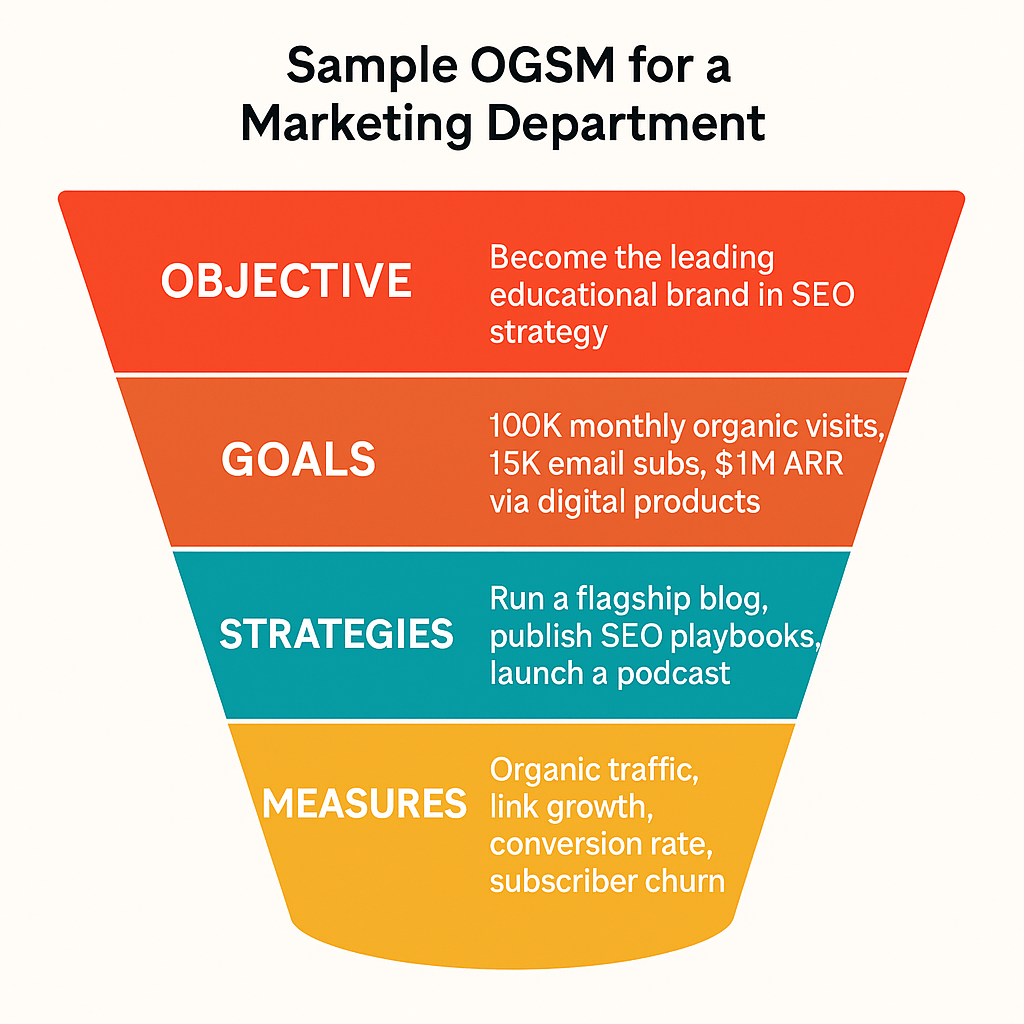
A Strategic Model for Marketers Who Play Long Games
OGSM stands for Objectives, Goals, Strategies, and Measures — a simple but effective tool that helps teams turn big ideas into clear, measurable plans.
It’s not some corporate relic. OGSM works because it cuts through complexity. It forces you to define where you’re going, how you’ll get there, and how to measure progress — all on one page. That’s why it’s still used by some of the world’s biggest brands, and increasingly by marketers who are tired of scattered tactics and want long-term results.
The vision. The headline. The long-term outcome you’re chasing.
Example: Be the #1 thought leader in AI marketing strategy by 2026.
These are the numbers — quantifiable, time-bound targets.
Example: Reach 1M organic visits/year, 10K subs, 500 backlinks.
Your key plays. The core initiatives that will move the needle.
Example: Publish weekly deep-dive reports, collaborate with analysts, run an invite-only summit.
Your scoreboard. Trackable KPIs that tell you if it’s working.
Example: DA score, referring domains, lead-to-sale ratio, engagement rates.

Despite the trend toward “move fast and break things,” OGSM endures because it anchors strategy in reality. It forces decision-makers to define success, choose priorities, and commit to measurement — all on one page.
It’s been used by companies like P&G, Coca-Cola, and Honda — and increasingly by marketing teams who want fewer shiny objects and more direction.
OGSM thrives when:
Marketing isn’t just about outputs — it’s about outcomes.
OGSM forces clarity between vision and execution, making it easier to spot which activities are moving the business forward (and which are just noise).
It helps you:
| Element | Example |
| Objective | Become the leading educational brand in SEO strategy |
| Goals | 100K monthly organic visits, 15K email subs, $1M ARR via digital products |
| Strategies | Run a flagship blog, publish SEO playbooks, launch a podcast |
| Measures | Organic traffic, link growth, conversion rate, subscriber churn |
| OGSM | OKRs | |
| Focus | Strategic planning | Goal execution |
| Structure | Vision > Goals > Strategy > KPIs | Objective > Key Results |
| Best For | Annual/long-range planning | Quarterly team-level execution |